Feb. 7, 2024:
After a late night last night, we slept late this morning, and partook of a late breakfast eating Norwegian waffles onboard. By the time we woke up, the sun was just coming over the mountain surrounding the port of Alta (at 10:00 a.m.!). Fortunately, our excursion during the day today didn’t start until 1:00 in the afternoon! Which was good, because it was a frigid 10 degrees outside (and that was the high for the day)!

Alta is the main town in the northernmost Norwegian County of Finnmark, with a total population of 70,000 people, 20,000 of whom live in town. But since we are in the heart of Sámi country (whose traditional pastime is reindeer herding), there are 180,000 reindeer. The Kven people (pronounced “kanne”) are Finnish descendants of workers in the fisheries and mines in the 1800s. As we mentioned yesterday, the indigenous people are the Sámi. Many live up in the plateau lands near the Russian and Swedish borders; and many are traditional reindeer herders. 70% of the people in Finnmark have Sámi ancestors.
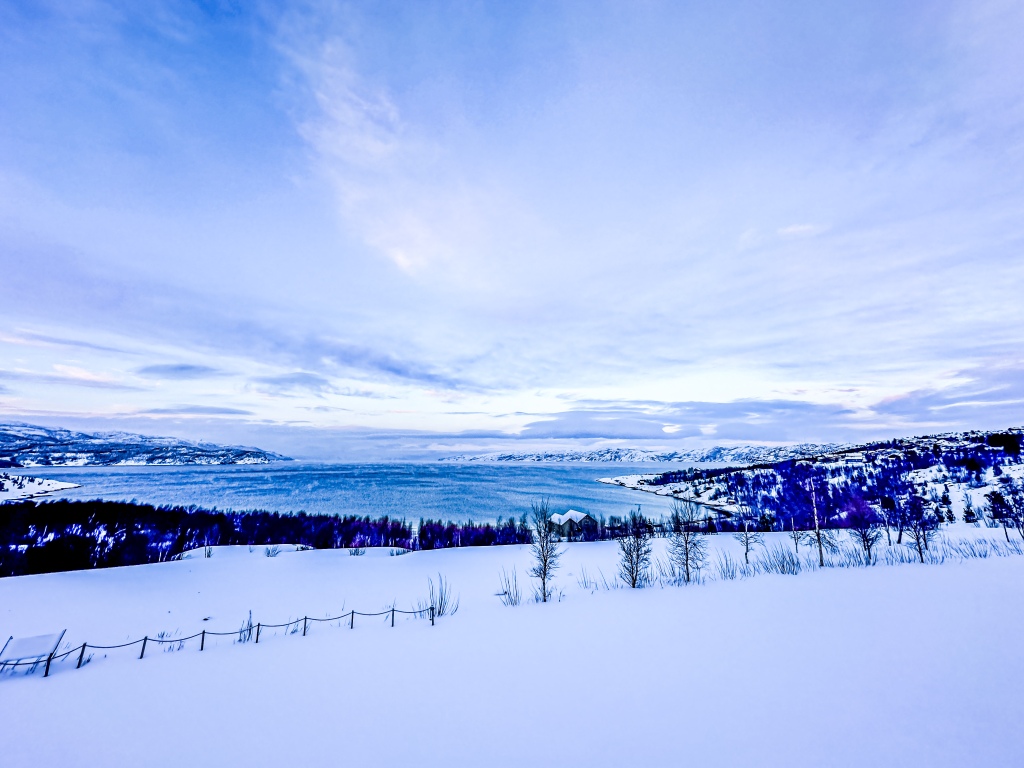
There is also an airport here in Alta, which gets several flights per day. However, all the flights only connect within Norway, and Oslo is a two hours flight to connect to the rest of Europe.
Unlike Tromsø, which basically sits on a strait running between the island and the Norwegian mainland, and never freezes over; Alta is at the mouth of the the Alta River, which is frozen over now, and will remain that way until late April or May. Numerous rivers cross Finnmark, and most of them empty into the sea. For that reason, salmon use the rivers to spawn, and Finnmark is considered one of best salmon fishing areas in the world; especially the Alta River.
Alta claims the title of the City of Northern Lights. The season for the Northern Lights is from the end of August until March. Our guide (a transplanted Irishman) told us that in his opinion, some the best Northern Lights viewing is in October and November, when the temperatures are much milder, and the Lights tend to be better closer to the equinoxes.
Alta is located seven hours north of the Arctic Circle, and it is the same distance from here to Berlin as from here to the North Pole! The town of Alta just came out of the polar night, so the residents saw sunlight the first time on Sunday morning (for the first time in 10 weeks)! At this high northern latitude, they gain one hour of sunlight per week. By the time they reach May, there are two months of uninterrupted sunlight (from the end of May until the end of July).
Sadly, the town of Alta and all its surrounding towns and settlements were completely destroyed by the Germans at the end of WWII because of its strategic value for the transport of many raw materials used in the manufacture of industrial goods. Even the livestock were destroyed, because the Germans wanted the Russians to have nothing to survive on when they retook the German-occupied areas. Consequently, many towns in Finnmark were never rebuilt post-war. The destruction was so complete that even churches were burned to the ground, with the exception of churches whose graveyards surrounded the church buildings, so only about three churches in the whole county remain from the pre-war era. The center of Alta was purpose-built in a new location (up on the bluff surrounding the town, instead of down by the water) after the war. Today, it is the only town in Finnmark which is growing.
In addition to the Northern Lights, and the great summertime activities, Alta is famous for the thousands of rock carvings discovered here dating from Stone Age (between 7,000 and 2,000 years old). There have been inhabitants in this area for 11,500 years. There are about 3,000 rock carvings, most of which are left in the open so the snow protects them from damage caused by freezing and thawing ice. Alta was obviously the former site of multiple trade crossroads, and artifacts have been left which establish this. Alta is the only UNESCO prehistoric site in Norway. Our prime objective for the daytime is visiting the Alta Museum, which has numerous examples of its stone art, as well as good exhibits about the Sámi culture and the industrial age of Alta.



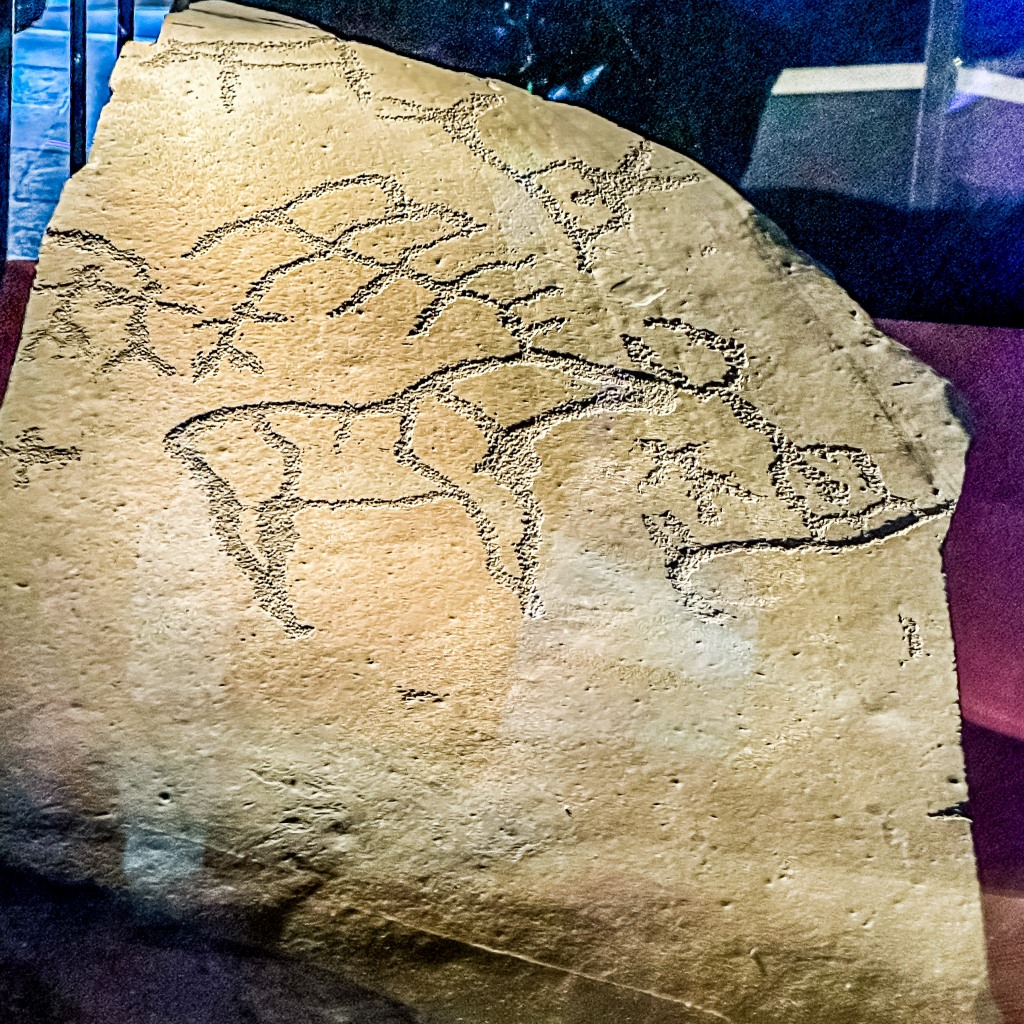
In the modern period, Alta became the site of a huge mining area. Its most famous export is slate, and most of the homes in Norway with slate roofs have slate mined in in Alta. In the port area, you can see huge bulk container vessels exporting Alta slate all over the world. However, as the Industrial era progresses, Alta also became famous for mining tin, then copper, and nepheline syenite (used in glass, porcelain, ceramics and paint). The tin and copper mining operations were made possible by huge investments from the British, and developed into a world-class mining operation post-WWII. Fun fact: one of the biggest investors in the Alta mining operations was Lord Carnarvon, which gave him the wealth to fund the search for Tutankhamen’s tomb.
The museum was fascinating, and a welcome activity on a day which did not warm up past 3 degrees F. Jim and I particularly enjoyed the Stone Age exhibits, but there were also some good materials about the Sámi culture (and the gift shop was particularly nice). When we left the museum, the temperature had dropped, and it was snowing, which did not bode well for our Northern Lights chase later this evening.




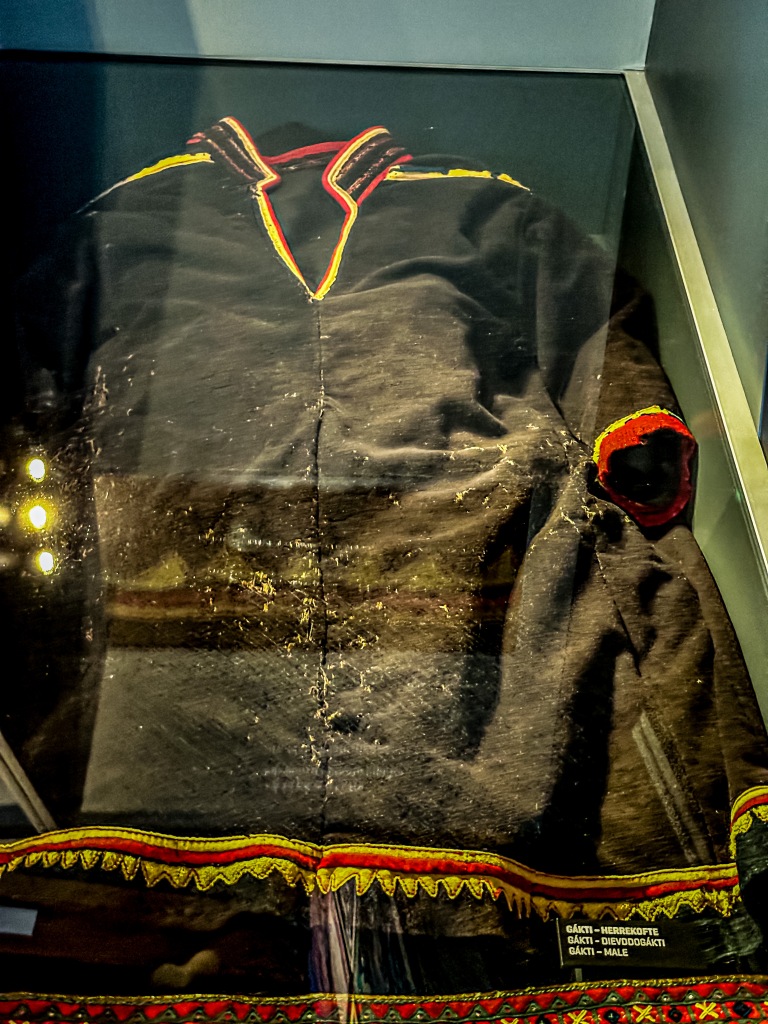


We left the museum to view the oldest building still standing in Alta; a Lutheran church, called the Old Alta Church. In fact, it was the only building which survived the destruction of Alta, because it was a church with graveyard surrounding it. The church was opened in 1858, and the roof is slate. It is the first building commissioned to have a roof using Alta slate. Parts of it have been rebuilt several times, but the most recent was in the 1970s. Today, it only seats about 200 worshippers, because most Norwegians today are very secular. Alta also has the Cathedral of Northern Lights, which was built in 2013, and is now the main church in Alta. However, this church is still in use (particularly by older citizens whose religious lives took place here).
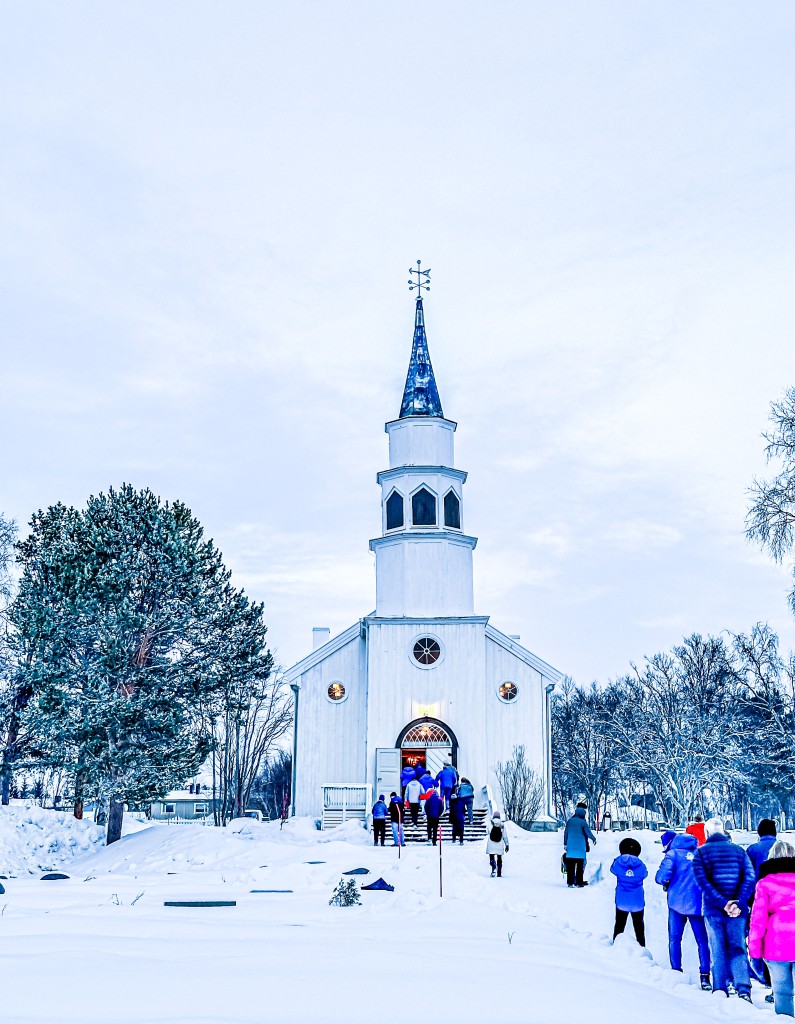


Of course, no visit to Alta is complete without viewing the Cathedral of Northern Lights, so we did a drive by of its exterior. The titanium cladding is particularly imposing, and was designed to look like a swirl of Northern Lights. However, if you want to see the interior, be aware that it is only open to the public from 11-1 during the week.

We got back to the ship and sorted ourselves out because we were planning to go searching for the Northern Lights later this evening, this time was a Viator company called Alta Adventures. Since we remain in port overnight, at least we know we won’t have to cut the chase short to return to the ship. We ate an early dinner, and bundled up in multiple layers. Our weather apps were telling us that it was -1 degree F. and felt like minus 16F.
We drove first along the southern coast hunting for the lights, but had no luck. We did see another church which escaped being burned by the Germans, though.


Then they took us up into the mountains to the east of town, and set us up a little camp, including a fire and stools with reindeer skins. However, almost right away we could see the first glimmers of the lights, and the show got better!
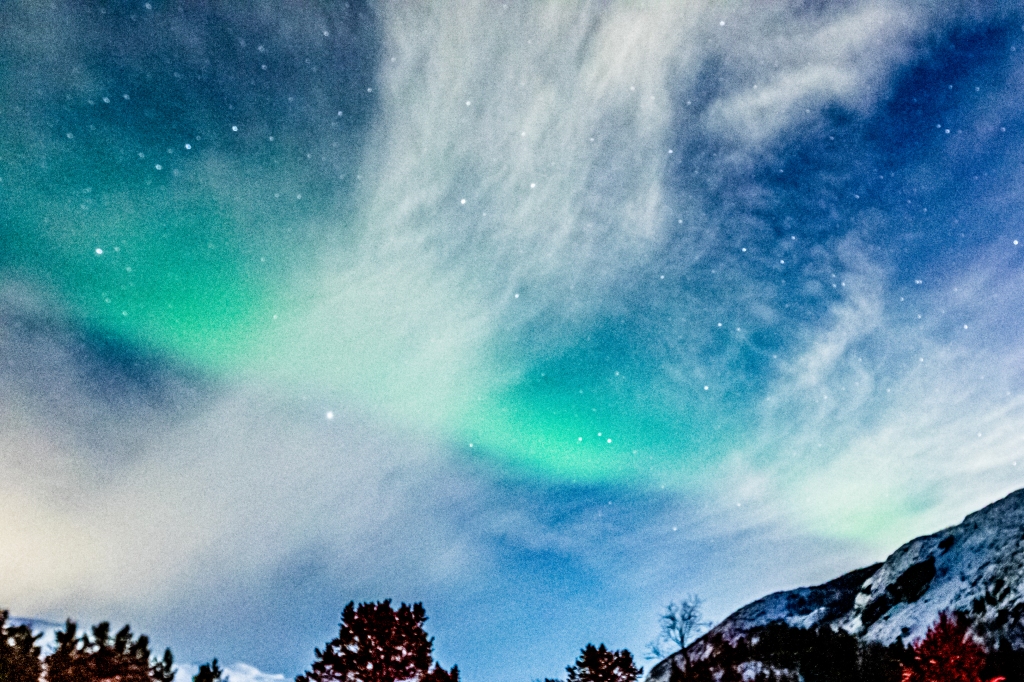
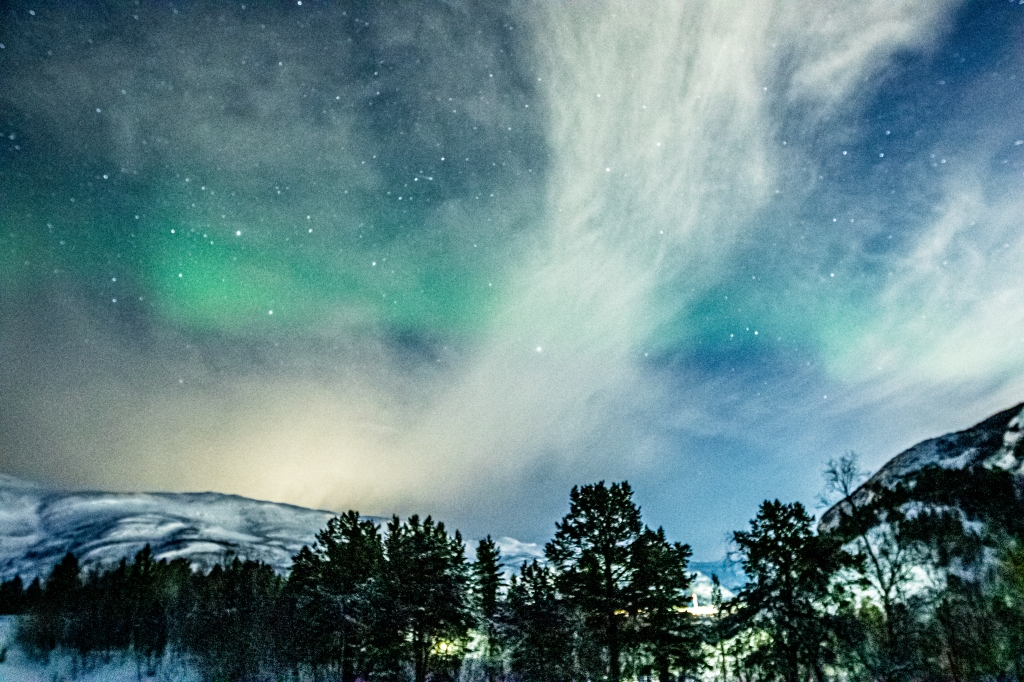
We were in a really pretty valley overlooking a lake, but it was bitterly cold. For once, we could see the Lights with our naked eyes. Sadly, though, somehow my camera got out of focus, and even with a headlamp, I could find the focus again. But even the most out of focus pictures shows the curtains of light and some of the amazing colors we saw.




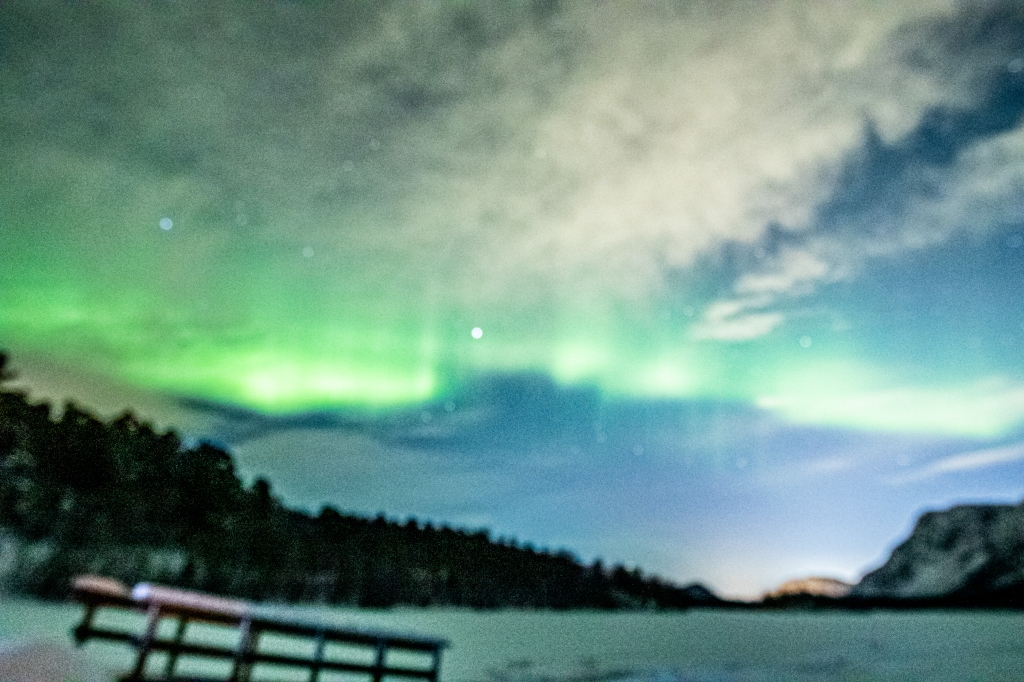
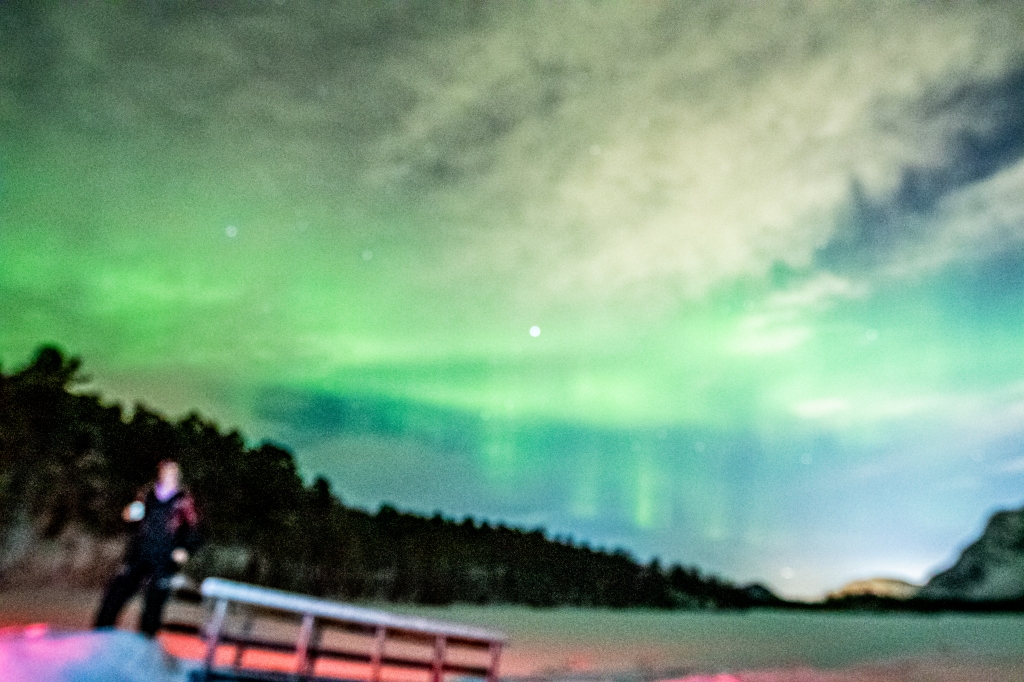





All too soon, it was time to head back to the ship, but we will remember these sights for the rest of our lives!


Fantastic!
LikeLiked by 1 person
Wow! What kind of camera did you use?
LikeLiked by 1 person
Wow! Amazing to see the stars through the lights. Thank you!
LikeLiked by 1 person
I’m now forced to pull up a map of the places you’ve been, at and headed to. You’re going off the grid McDaniels!
If my memory services me correct, you’ve been traveling over 14 years, practically non stop. Congratulations this is fantastic. Thank you for sharing your adventures & great tips for all of novice explorers. keep in mind, stay safe, Know your exits in large crowds and keep on trucking baby!!!
all the best to you and Jim.
Lyne DeCuir-Ippoliti
xo
LikeLiked by 1 person
Dear Lyne:
It’s so good to hear from you! The Gringos have only been retired since 2015, and COVID shut us down for two years, but we were on a mission to see as much of the world as we could before our grandchildren arrived. Now that the first has made an appearance, and Nonna and Papa are babysitting two days a week, you can expect we’ll be traveling less (or at least for shorter periods of time). Hope all is well with you!
Stacy
LikeLike